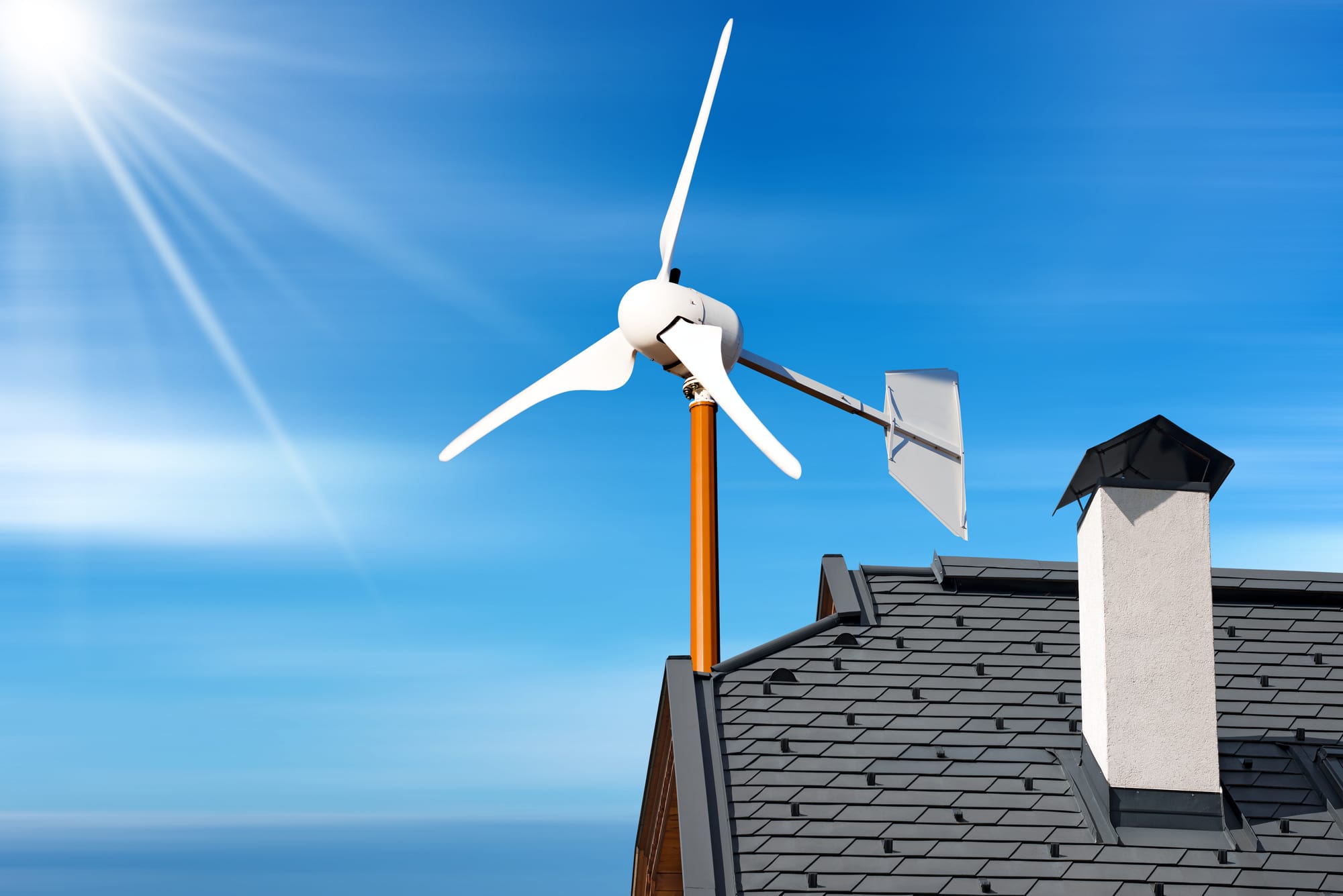WIND TURBINES

- Horizontal-Axis Wind Turbine (HAWT):
Small HAWTs designed for homes typically have rotor diameters of 1–5 meters and are mounted on towers 10–30 m high. They use lift-based blades, often with tail vanes to face into the wind. Power output ranges from 500 W to 20 kW, enough to supplement household electricity use or charge battery banks. Efficiency can reach 30–40%, but they require steady wind and clear, open areas to perform well. - Vertical-Axis Wind Turbine (VAWT):
Household-scale VAWTs have compact designs and can be roof-mounted or installed at lower heights. Common designs include Darrieus types (more efficient) and Savonius types (simpler, better in very low wind speeds). Output typically ranges from 100 W to 10 kW, depending on size and wind resource. Efficiency is usually 20–30%, but they work better in turbulent, multi-directional winds (like urban rooftops) and are quieter than small HAWTs. - Vortex Resonance Turbine (Bladeless):
Domestic prototypes are lightweight, pole-mounted devices around 3 m tall. They generate power by oscillating in the wind, with no blades or rotating parts. Current designs are in early stages, producing 50 W to a few hundred watts, mainly suited for charging small electronics, lighting, or as a supplement to solar panels. Efficiency is relatively low (~20–25%), but benefits include silent operation, low maintenance, and minimal visual impact.
✅ Here’s a quick comparison table for household-scale use:
| Type | Typical Power Range | Efficiency | Best Suited For | Pros | Cons |
|---|---|---|---|---|---|
| HAWT (Horizontal) | 0.5 – 20 kW | 30–40% | Rural homes, open windy sites | High efficiency, mature tech | Needs tall tower, noisy, requires steady wind |
| VAWT (Vertical) | 0.1 – 10 kW | 20–30% | Urban/rooftop, turbulent winds | Omnidirectional, compact, quieter | Lower efficiency, smaller market availability |
| Vortex Resonance (Bladeless) | 50 W – few 100 W | 20–25% | Supplemental power, small devices | Silent, low maintenance, wildlife-friendly | Low power, still experimental |